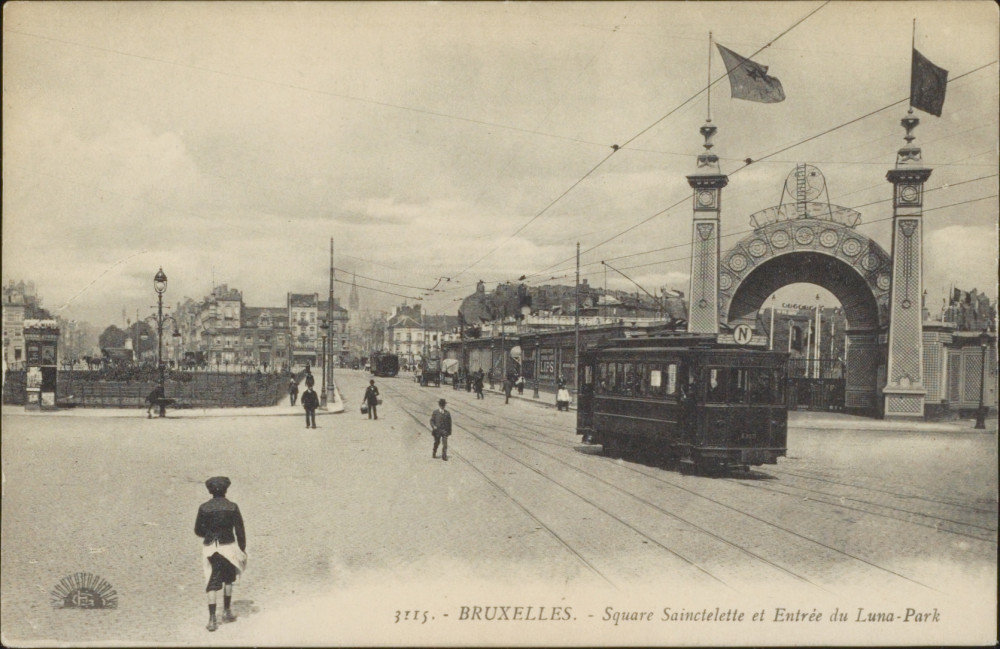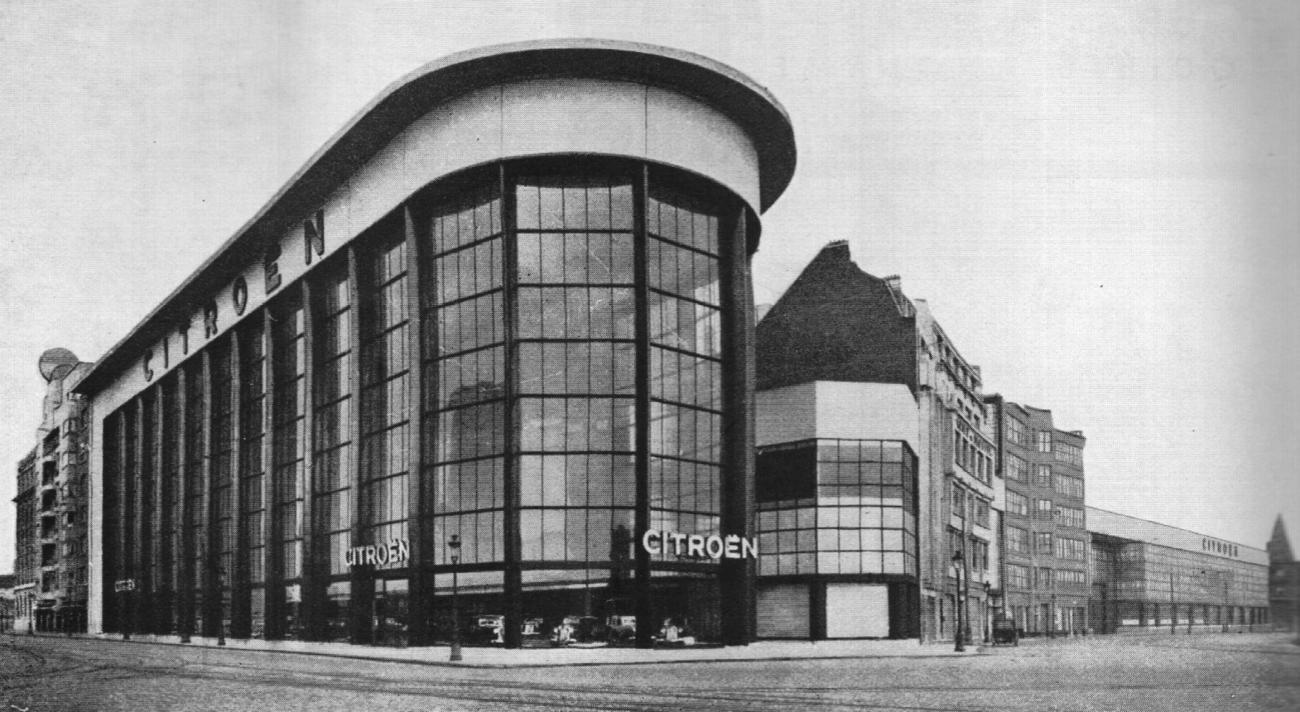History of the building
From a car factory to a museum
Kanal is uniquely located on the banks of the Charleroi-Brussels Canal. The docks on which the building stands, were drained in the early 20th century. From 1912 to 1916, the site was home to the "Luna Park de Bruxelles", a large amusement park with a fairground, bowling alley, restaurant and theatre, where Brussels and non-Brussels flâneurs loved to come for a stroll.

In the early 1930s, car tycoon André Citroën bought the plot to build a new flagship plant. At his request, the architects Alexis Dumont, Marcel Van Goethem and Maurice-Jacques Ravazé designed a "cathedral for cars": a huge modernist complex, built from concrete, steel and glass, boasting numerous workshops and a 21-metre-tall showroom as the absolute eye-catcher.
For a long time, the building was the largest garage in Europe. After the Second World War, in preparation for the 1958 World Fair, a large viaduct was constructed on Boulevard Leopold II, skirting the Citroën garage. In response, the showroom was divided into several levels, making sure that passing motorists could still gawk at the latest car models on display.

Between 1953 and 1966 the grounds adjacent to the garage were home to the Héliport de Bruxelles, on what is now Avenue de l'Héliport. The landing of the Rolling Stones was one of the last highlights in the heliport’s storied history.
A new era began when Citroën moved shop and vacated the premises in 2014. In 2015, the Urban Development Corporation of the Brussels-Capital Region's (SAU-MSI) bought the garage with the ambition to transform it into an international cultural centre. It launched an architectural competition and transferred control to the Kanal Foundation. The winning bid A stage for Brussels by Atelier Kanal (noAarchitects, EM2N and Sergison Bates architects) was unveiled in early 2018.
The award-winning design is now being developed into a new museum for Brussels, Kanal-Centre Pompidou, with the Brussels-Capital Region as a key partner. The project will also incorporate CIVA, the Brussels centre on architecture, landscape and urban planning. A temporary agreement was signed with the Centre Pompidou in Paris, which will run until five years after Kanal’s opening. That opening is scheduled for 2026. Between Kanal, the next-door Kaaitheater and the vibrant quartier beyond, the site will once more become a happening place where Brusselers and non-Brusselers can enjoy a stroll, celebrating art together.



